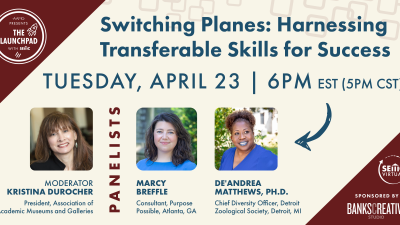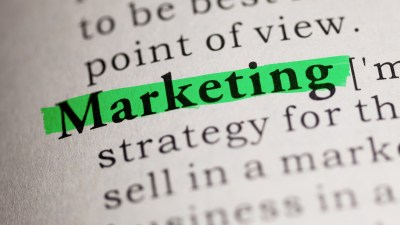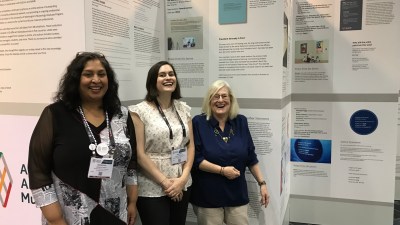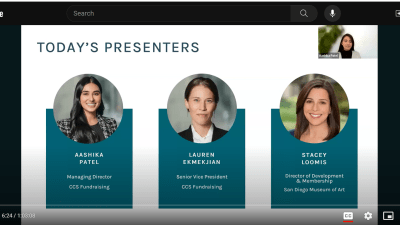Did you know that Tuesday consistently wins the prize as the most productive day of the week, with, you guessed it, Friday as the least productive. No matter what day of the week it is, too little time and too much to do is a common condition for many of us. We all strive to complete the items on our ‘to do’ lists, but most days we come up short. A recent Gallup poll tells us that the average salaried employee is putting in nearly 10 hours a day and 25% of us are working a 60-hour week. But we also know that we are not productive 100% of the time and our days are filled with interruptions and distractions, too many meetings, and the pressured feeling to stay connected in our busy-every-minute world. Stretching resources and doing more with less is familiar territory for most of us, but feeling obligated to work all the time leads to burnout, which is, as we all know, unproductive. Without necessary breaks, we cease being the nimble, creative, and effective museum workers that we strive to be. As museum professionals, we know that working smarter will increase our staff capacity and result in better service and programs for our audiences and communities. And, learning to adapt and adopt new ways of working can help us to be better workers and co-workers with a more positive outlook and a renewed enthusiasm for the work we do – what could be more important?
What is Productivity?
Busy is the new norm, but busy doesn’t always equal productive. Productivity can be defined by the definition “getting the right things done,” refining and implementing smarter workplace practices and setting thoughtful priorities. Because it is important to raise our awareness about where our time is spent, as well as how much of our precious time is spent on projects and tasks, some professionals keep a time log. This strategy can help you to discover the often frustrating discrepancy between how long you think a task will take versus how long it actually takes you to complete it.
In addition to keeping a time log, here are some practical tips to get you started on the road to increased productivity:
Skip over related stories to continue reading articleHow Can You Be More Productive?
Make the most of peak energy times – When do you work your best? If you are like most people, the morning is your most productive time. A Wrike.com survey tells us that 64% of workers feel most productive between 8am and 12noon. Schedule your most important tasks for the time that you have the most fuel in your tank.
Reduce the number of meetings. In a 2013 Salary.com survey, employees chose too many meetings as the biggest distraction and waste of time presented by the workplace. What is the meeting for? Is there an agenda? Is there a time limit? Can your staff agree not to have more than a certain number of meetings per week? Though meetings can be wonderfully effective ways to communicate face-to-face with colleagues, remember that less is more. Museum staff often tell me that meetings with outside vendors and potential partners take up too much of their time. If this is your challenge, consider setting tight parameters for this type of meeting, just as you set guidelines for accepting objects into your collection.
Limit interruptions and distractions. The average office worker is interrupted 7 times per hour and office distractions eat up, on average, 2.1 hours a day. Distractions come in both human and digital form – co-workers, volunteers. and even ourselves! In fact, sometimes we are our own worst enemy with constant digital and social media interruptions. Be sure to create a sign or signal to let co-workers or volunteers know you are busy. Follow the professional examples of companies like Google and General Mills by setting quiet hours for your entire office. And, don’t forget to turn off those signals that tell you another email has arrived in your inbox.
Get Organized. A 2011 Office Max workplace organization survey conducted by Kelton Research found that 9 in 10 (90%) of Americans admit that clutter at home or work has a negative impact on their life. 77% said that it affects their workplace productivity. As museum professionals we tend to save things because, well, that is what we do and we convince ourselves that we might need it someday. Yes, we might need it, but we don’t need to save everything. Our cluttered spaces are actually making us less creative and able to focus on our work. Often the way your office is set up is just as important as the items you choose to retain in your space. Why is it set up this way and why are you keeping the items that are there? Ask yourself these questions and try to see your space with a fresh set of eyes. You should have systems in place that work for you and the way you work. And remember, organizing is a process, not a one-time event, so set aside some time on your calendar and start reducing the volume today!
Make Some Changes!
There are no perfect shortcuts to being more productive, but instead of ignoring the productivity issues in your museum, tackle them and challenge the status quo. Take some time to question what you do with the limited amount of time you have each day, sharpening your awareness and trying some new and varied strategies in your attempt to get the right things done.
Marilyn Weiss Cruickshank is a Boston-based organizing and productivity consultant who has over two decades of non-profit experience helping museums, historic sites, parks, and cultural organizations fulfill their educational missions. Her business, Creative Simplicity Organizing & Productivity (www.csimplicity.com) combines her background in education and museum work with her passion for helping clients get organized and make more efficient use of their physical and digital space, time, and resources. Marilyn works one-on-one with museum and historic site staff, and facilitates professional development workshops for staff, volunteers, and board members. She is a former Director of Education at the USS Constitution Museum, Boston, a former Board Member of the New England Museum Association, and a past recipient of AAM’s Nancy Hanks Memorial Award for Professional Excellence in the museum field.









Comments